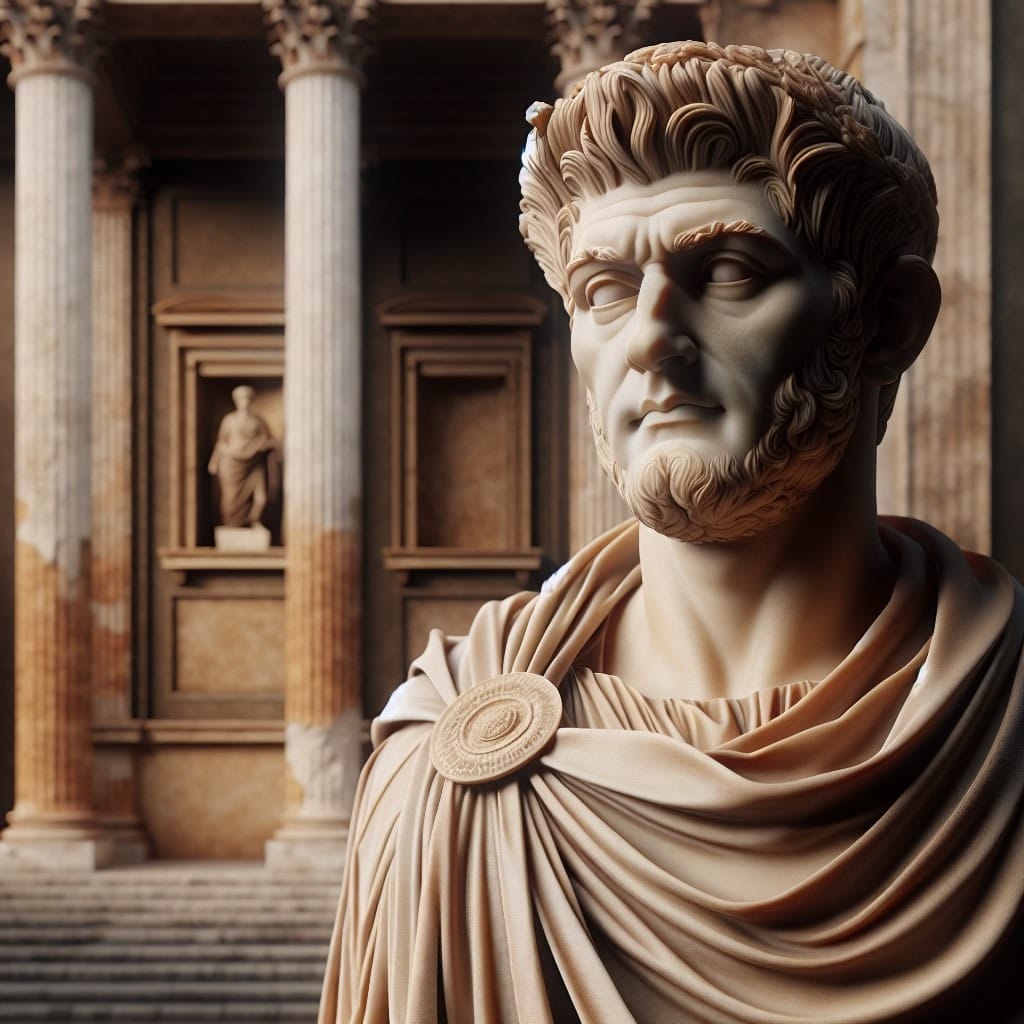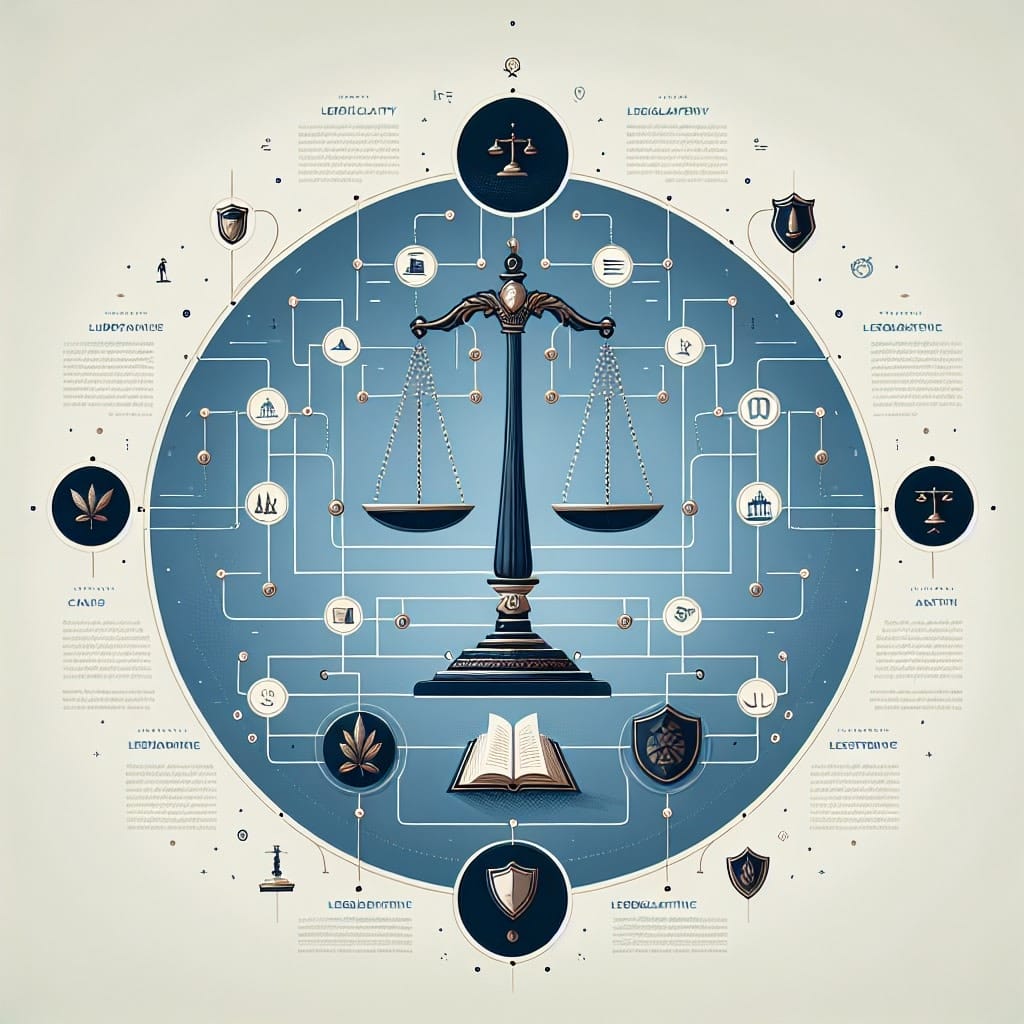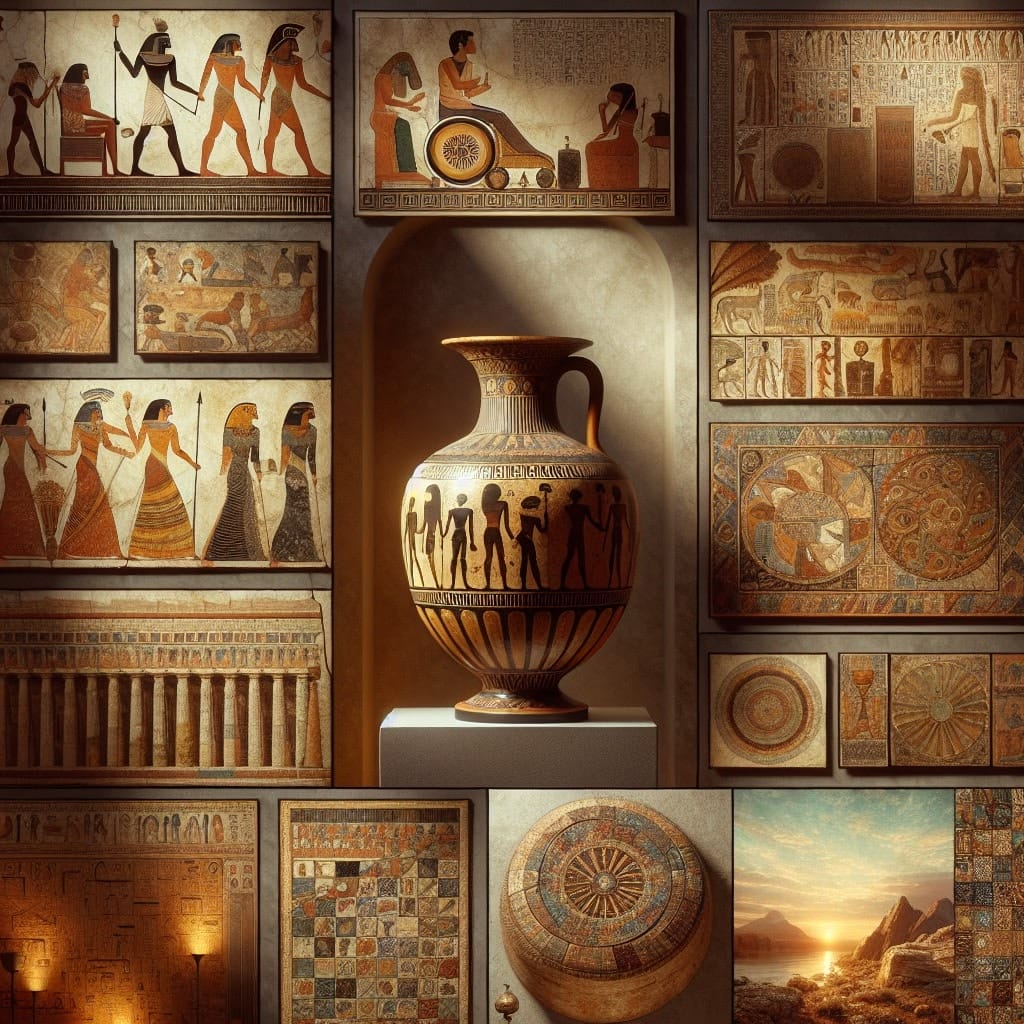The Roman legal system has profoundly shaped the foundation of modern legal frameworks. Emerging from the city of Rome and expanding throughout the Roman Empire, it evolved through distinct stages, including the influential Corpus Juris Civilis under Emperor Justinian I. This legal heritage has informed both civil and common law traditions across the globe.
A pivotal element of Roman law was the role of praetors, powerful magistrates responsible for administering justice and managing complex legal proceedings. Their authority in civil matters set precedents for our modern judicial concepts, including the roles of plaintiffs, defendants, and judges.
Studying Roman legal practices, therefore, offers valuable insights into the development of legal systems today, highlighting how ancient principles continue to guide and influence contemporary judicial processes.
The Role of Praetors
In ancient Rome, praetors were judicial officers imbued with broad authority to administer justice in matters of equity. Initially, this role was reserved for magistrates, but it expanded in 337 BC to include plebeians, reflecting Rome’s evolving social structure. The praetors’ primary function was to oversee legal proceedings and interpret the law, which significantly influenced the development of Roman legal principles.

Praetors issued edicts at the outset of their terms, setting the legal framework for cases they would preside over. These edicts introduced new legal concepts, adapting the law to contemporary needs. By partnering with jurists and legal scholars, praetors contributed to the rich tapestry of Roman jurisprudence, ensuring the legal system remained flexible and relevant.
Their role parallels that of modern judges, who also wield significant authority in legal proceedings. Like praetors, contemporary judges are integral to shaping legal precedents and ensuring impartiality in the judicial process. The enduring influence of praetors is evident in today’s legal systems, underscoring their lasting legacy in both civil and common law traditions.
Evolution of Judges
The transition from praetors in ancient Rome to modern judges marks a significant evolution in judicial roles. Praetors were pivotal figures, administering justice through edicts that adapted laws to current needs. As societies evolved, so did the judicial roles, leading to the establishment of codified laws and structured courts.

In modern times, the principle of impartiality became central. The Framers of the Constitution emphasized judicial independence, ensuring judges were free from external pressures. This independence, rooted in Enlightenment principles, was crucial for maintaining fairness and public trust in the judiciary.
Historical examples, like those of Constance Baker Motley and Chief Standing Bear, illustrate how judges have shaped societal norms. Landmark cases, such as Gideon v. Wainwright, highlight the judiciary’s role in advancing rights. These examples underscore the judiciary’s evolving role in reflecting and enforcing societal values over time.
Plaintiffs and Defendants in Roman Law
The roles of plaintiffs and defendants in Roman law laid the foundation for modern legal proceedings. In Roman legal systems, free individuals could engage in legal actions, establishing the distinction between plaintiffs, who initiated claims, and defendants, who responded to them. This framework was shaped significantly through the writings and authority of Roman jurists, whose legal commentaries influenced courtroom procedures and the codification of laws under Justinian.

Legal proceedings in Classical Rome involved a consent-based approach, akin to modern arbitration. Plaintiffs and defendants presented their cases before a magistrate, often reaching a resolution through a formulaic process. This system emphasized public trials, social pressure, and accessible legal representation, elements that persist in contemporary legal systems.
| Aspect | Roman Law | Modern Law |
|---|---|---|
| Initiation | Consent-based formula | Formal complaint or lawsuit |
| Representation | Advocates without fees | Legal counsel with fees |
| Judgment | Magistrate’s binding decision | Judge or jury verdict with appeals |
The Roman legal principles of impartiality, consent, and precedent-setting decisions have profoundly influenced the structure and function of modern judicial systems, ensuring a lasting legacy in today’s legal practices.
The Concept of Juries
The jury system as we understand it today finds its roots in the Roman legal framework, which, although lacking formal juries, laid the groundwork for participatory justice. Roman courts utilized a system where a judex, a layman appointed to decide specific cases, functioned similarly to a modern juror. The Legis Actiones process, for example, involved public trials and community involvement, reflecting early jury-like roles.

As Roman legal procedures evolved, the Formulary System and Cognitio Extraordinaria marked significant shifts, gradually increasing the authority of magistrates and the state in judicial matters. This evolution from layman-dominated trials to state-controlled processes paved the way for judicial systems that balance state and citizen roles, akin to modern juries.
“The role of juries in ensuring community participation in justice is a cornerstone of democratic legal systems.”
The Roman emphasis on citizen involvement and the structured trial process has left an indelible mark on Western legal practices. Despite challenges during the imperial era, the cultural and legal significance of these early systems underscores the enduring importance of juries in safeguarding justice and upholding citizens’ rights.
Roman Court Procedures
The Roman court system was characterized by its structured and methodical approach to justice, forming the foundation of many modern legal practices. Central to this system were the roles of magistrates and the evolving complexity of legal proceedings.

- Legis Actiones: This initial phase involved a formal process where the plaintiff publicly summoned the defendant. A magistrate would oversee a preliminary hearing to identify the issues, leading to a trial by a layman, or judex.
- Formulary System: As cases became more intricate, written documentation and the magistrate’s authority grew, marking a shift to structured legal processes. However, the judex’s role in trials remained crucial.
- Cognitio Extraordinaria: This stage saw increased court control, with magistrates issuing summonses and enforcing sentences. It introduced appeals, aligning more closely with contemporary judicial systems.
While the Roman procedures laid the groundwork for modern courts, significant differences exist. Modern systems emphasize impartial juries and codified laws, unlike the Roman reliance on magistrates and laymen. Nonetheless, the Roman emphasis on structured trials and legal documentation continues to influence current judicial practices, highlighting their enduring legacy.
Influence on Civil Law Systems
The adoption of Roman legal principles has profoundly shaped civil law systems across Europe. Central to this influence was the revival of Roman law during the 11th century, particularly in Northern Italy, which offered a unified legal framework that spread across the continent. This revival facilitated the development of legal codes such as the Napoleonic Code in France and the codifications in Germany, both of which drew heavily from Roman legal traditions.

Roman law’s distinction between public and private law has left a lasting imprint, especially in private law, which governs relationships among individuals. Concepts like pacta sunt servanda (agreements must be kept) continue to underpin modern contract law. Furthermore, Roman jurists laid the groundwork for clear distinctions in legal concepts such as ownership versus possession and contract versus tort, forming the bedrock of contemporary legal systems.
Beyond Europe, Roman law’s reach extends globally, influencing legal systems in countries such as Turkey, China, and Japan, where its principles have been adapted to local contexts. This enduring legacy underscores the pivotal role of Roman legal philosophy in shaping modern civil law.
Impact on Common Law Jurisdictions
While Roman law primarily shaped civil law, its indirect influence on common law cannot be overlooked. This impact is evident in several key concepts adopted by common law systems, such as the distinction between contract and tort and the development of legal principles like pacta sunt servanda (agreements must be kept).

Despite these similarities, stark contrasts exist between common and civil law traditions. Roman law’s structured codification contrasts with the case-based nature of common law, where precedents play a pivotal role. Below is a comparison chart highlighting these differences:
- Legal Framework: Roman law influenced codification (Civil Law) vs. precedent-based (Common Law).
- Legal Concepts: Clear distinctions in Roman law (e.g., contract vs. tort) adopted in both systems.
- Role of Judges: Roman influence on judge’s authority in civil law vs. case interpretation in common law.
Despite the differences, the foundational aspects of Roman legal thought continue to resonate within common law jurisdictions, illustrating how historical frameworks can transcend legal boundaries and influence diverse legal systems globally.
Enduring Legacy of Roman Legal Philosophy
The philosophical underpinnings of Roman law have laid a robust foundation for modern legal systems, transcending centuries and geographical boundaries. At its core, Roman legal philosophy integrated principles of natural law, particularly the concept of ius naturale, which espoused inherent human rights beyond the reach of legislative repeal. This notion has profoundly influenced contemporary understandings of universal human rights.

“Roman legal philosophy’s embrace of universal principles continues to echo in the corridors of justice today.”
The long-term influence of Roman legal thought is evident in its systematic approach to law as a science. Roman jurists meticulously crafted distinctions between legal concepts, such as ownership versus possession, which remain integral to modern legal frameworks. These distinctions have shaped the legal science taught in law faculties worldwide, ensuring Roman law’s presence in legal education and practice.
In modern relevance, Roman law’s commitment to codification and structured legal processes has been instrumental in developing civil law systems. The principles embedded in the Corpus Juris Civilis continue to inform legal codes and judicial procedures, underscoring the timeless impact of Roman legal philosophy on current legal doctrines and practices.
Roman Contributions to Legal Education
The development of legal education in Rome played a pivotal role in shaping contemporary legal systems. Roman legal education was notably systematic, offering a structured curriculum that included the study of foundational texts, such as the Twelve Tables and the Corpus Juris Civilis. This rigorous approach laid the groundwork for the scientific study of law, which continues to influence modern legal education.

Roman legal scholars like Gaius and Ulpian significantly contributed to the development of legal thought through their comprehensive commentaries and treatises. Their works provided detailed analyses of Roman law, which have been instrumental in understanding legal principles that endure today. Gaius’s Institutes, for instance, served as a foundational text for legal instruction and inspired subsequent legal codifications.
The influence of Roman legal education extends to contemporary law faculties, where the study of Roman law remains a core component of legal curricula. This legacy underscores the importance of Roman contributions to the systematic, analytical approach to legal education that persists worldwide, bridging ancient and modern legal traditions.
Influence on Legal Terminologies
The enduring impact of Roman law is vividly seen in the legal terminology that continues to permeate modern legal systems. Latin terms, such as “obligatio,” “delict,” and “usufruct,” are prominent examples that have sustained their relevance and usage in legal discourse today. These terms not only reflect the Roman origins but also illustrate the precision and clarity they brought to legal concepts.
In contemporary legal systems, the term “obligatio” is used to denote obligations and duties, a concept central to contract law. Similarly, “delict” refers to torts or wrongful acts, underpinning the legal framework for personal injury and damage claims. The notion of “usufruct,” which describes a temporary right to use another’s property, remains integral to property law and estate planning.
The continued use of these terms underscores the profound influence of Roman law on legal language, providing a common lexical foundation across civil law jurisdictions. This linguistic legacy not only enriches legal communication but also bridges historical and modern legal practices, highlighting the timeless relevance of Roman legal concepts.
Cultural Impact of Roman Law
Roman law has profoundly influenced not only legal systems but also enriched cultural expressions, particularly in art and literature. The legal dramas of ancient Rome have been immortalized in works such as Shakespeare’s “Julius Caesar” and more contemporary adaptations like HBO’s “Rome.” These narratives explore themes of justice, power, and governance that were pivotal in Roman legal culture.

Cultural narratives are frequently shaped by the legal ideals of fairness and justice, concepts deeply rooted in Roman jurisprudence. The portrayal of trials and legal disputes in literature often reflects Roman legal traditions, emphasizing the moral and ethical dilemmas faced by individuals and the state. Such themes have transcended time, influencing storytelling in diverse media.
In modern times, references to Roman law continue to surface, demonstrating its lasting cultural resonance. Legal thrillers and courtroom dramas, whether in novels or films, often draw upon Roman principles of law, echoing the timeless quest for justice and order that characterized Roman society. This enduring influence underscores the profound cultural legacy of Roman legal thought, permeating both historical and contemporary narratives.
Conclusion
The influence of Roman legal procedures is undeniably profound, shaping both civil and common law systems across the globe. From the pivotal role of praetors to the evolution of judges, Roman concepts have laid the groundwork for modern judicial practices. Elements such as impartiality in judges, the roles of plaintiffs and defendants, and the development of jury systems are just a few examples of this enduring legacy.
Roman law’s classification of legal principles and its codification practices continue to guide legal frameworks today. The enduring legacy of Roman law is not only seen in legal systems but also in the very language and education of law, underscoring its timeless relevance.
Frequently Asked Questions
What is the significance of Roman legal procedures in modern law?
Roman legal procedures have laid the foundation for many modern legal systems, particularly civil law. Concepts like the roles of judges and jurors, and the categorization of laws, continue to influence today’s legal frameworks.
Did Roman law influence common law systems?
While primarily associated with civil law, Roman law also impacted common law systems. England’s common law, for example, was indirectly influenced by Roman legal principles, especially in areas like contract law.
Are all modern legal principles derived from Roman law?
Not all, but many fundamental legal concepts, such as contracts and property rights, have Roman origins. Roman law was one of the first to make clear distinctions between legal concepts, shaping the way modern legal systems operate.
Is Roman law still relevant in today’s legal education?
Yes, Roman law remains a crucial part of legal education, particularly in Europe. It provides historical context and foundational knowledge that is essential for understanding contemporary legal systems.
What are some misconceptions about Roman law?
A common misconception is that Roman law solely influenced civil law systems. In reality, its principles have permeated various legal traditions, affecting both civil and common law frameworks worldwide.

